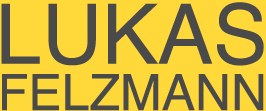Does Nature Play? Various are the roads of man. He who follows and compares them will see strange figures emerge, figures which seem to belong to that great cipher which we discern written everywhere, in wings, eggshells, clouds and snow, in crystals and in stone formations, on ice-covered (ungenau)waters, on the inside and outside of mountains, of plants, beasts and men, in the lights of heaven, on scored disks of pitch or glass or in iron filings around a magnet, and in strange conjectures of chance. In them we suspect a key to the magic writing, even a grammar, but our surmise takes on no definite forms and seems unwilling to become a higher key. Novalis, Die Lehrlinge zu Sais, 1802 We hear them flapping, we hear them screeching. Sometimes quieter and softer, sometimes more intense and more shrill, then the noise ebbs away into a distant, background noise?and then rises again suddenly. A senseless tangle of agitated birdsong, a deafening din that one cannot escape. It might sound like a paradox, but viewing the Swarm photographs of Lukas Felzmann is also an acoustic experience. Even if the pictures seem poor in content at first glance?just birds, sky, earth?they acquire a richness through their dense sequencing, the rhythm of near and far, the alternation of profusion and sparseness, the dynamic of small and large changes, and through the variety of that which is always the same. Isn?t Swarm an exceptionally musical book? A score in which the visual experience almost cries out for an acoustic translation? I wouldn?t be surprised if I came across this exceptional photo series again one day in musical form?not an authentic recording of birdsong, but as an instrumental performance based on the photographic original. The Blackbird Symphony. The buzzword is ?swarm intelligence,? which has acquired an unforeseen reality in the era of Facebook and Twitter. The behavior of a collective without a center has become a social phenomenon, which is of interest not only to natural scientists, but also in particular to politicians and economists. Why does a mass of individuals turn in one direction or the other? Who or what tips the balance? How much room for maneuver, how much freedom does the individual have over their decisions? What has to happen for a new formation to form out of another? Why do groups form? And why do they disperse again? As always, when we observe great historical and social revolutions, when new phenomena emerge, we want to understand. To find explanations for the unknown. To get to grips with the mysterious, by giving it a name at least. Who knows, maybe a scientific analysis of Lukas Felzmann?s images would shed some light on the rules that flocks of birds use when they swarm through the air, drop and climb again, gather together, and drift apart. One could measure the density of the flocks, determine the direction of their flight paths, plot the different patterns of the formations. But that?s not what this is about. When we leaf through from page to page, inquisitively follow the astonishing movements of the birds, and let ourselves be driven through the air with them, we are looking for something different. Something that has more to do with poetry than scientific observation. It?s as if we are eavesdropping on a foreign language. A language that consists of signs and sounds that have never been heard before. We attempt to understand messages whose meaning we are unable to grasp. We infer a system, assume a structure. But where does order begin? And where does the chaos end? Can we recognize movements that have any kind of purpose? Or are we witnesses of an aimless, natural game? Does nature play? Perhaps the reason why the Swarm series is so fascinating is precisely because it depicts something uncontrollable, irrational, free in our thoroughly rationalized world. Because the signatures that the birds write in the sky don?t allow any kind of clear interpretation. This is where the work of the photographer comes into play: with his camera he reveals things that the human eye perceives at best fleetingly and unconsciously. He collects signs, bestowed on him by chance?mysterious hieroglyphics for an imaginary archive. And he invites us to read these symbols as aesthetic figures, as a language of the unconscious. Or even as a magical, strange music. Fleeting and recurring, sweet and threatening, simple and complex all at the same time. And without any sort of purpose. Peter Pfrunder
